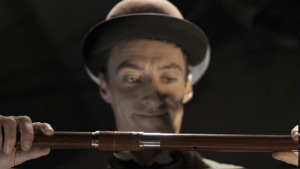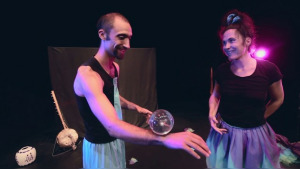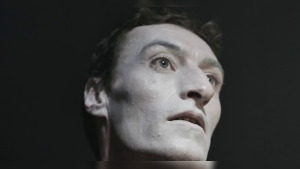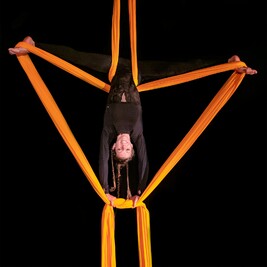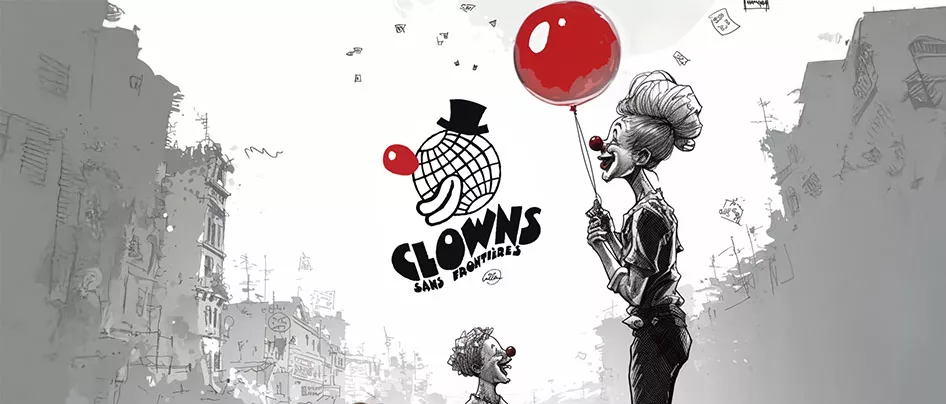
Clowns Without Borders France: The art of clowning in the service of humanitarian aid
Founded nearly three decades ago, the Clowns Without Borders France association stands out for a simple and powerful idea: to put the art of clowning and live performance at the service of humanitarian action. Like other “borderless” NGOs, this initiative mobilizes volunteer artists to bring laughter, hope, and comfort to the most vulnerable populations, particularly children, in crisis contexts. This article offers an in-depth look at the history, mission, and actions of Clowns Without Borders France, exploring its humanitarian and cultural impact, its internal operations, its multiple partnerships, and its links with the international Clowns Without Borders network. A documented, factual and committed look at “the art of clowning at the service of humanitarian action.”
History of Clowns Without Borders France
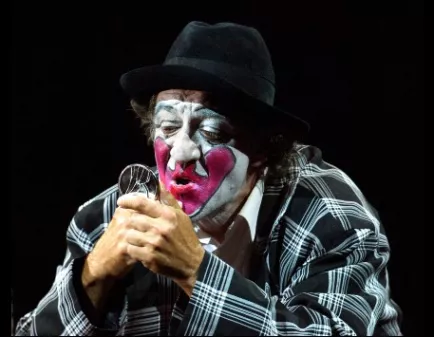
The story of Clowns Without Borders France begins in the midst of the conflicts of the 1990s. In February 1993, Catalan clown Tortell Poltrona was invited to perform in improvised schools in a refugee camp in Croatia, in the midst of the war in the former Yugoslavia. Marked by the experience and aware of the power of laughter in times of crisis, upon his return he created the association Payasos Sin Fronteras in Spain, laying the foundation stone for a humanitarian clown movement. During a Franco-Spanish tour organized that same year in Croatia, Tortell Poltrona encouraged his colleague and friend, French clown Antonin Maurel , to found a similar structure in France. The association Clowns Without Borders France was born in December 1993 in Paris, at the Villa Marcès (home of the Maurel family), which hosted its first steps. Antonin Maurel surrounded himself with a few passionate friends (including several members of his family as well as artists like Malik Nahassia and Sidonie Pigeon) to build this initiative, which was unprecedented in France.
The early years of Clowns Without Borders France were marked by the pioneering enthusiasm of its founders. The idea quickly resonated beyond its borders: in 1994, a joint mission of Canadian and French artists set out for Bosnia-Herzegovina to build on the initial momentum that had emerged in Croatia.
Throughout the 1990s, branches opened in other countries, such as Canada, Sweden, and the United States, inspired by the Spanish and French models. In France, the association consolidated its foundations: it was declared a non-profit association under the French law of 1901 from its inception.
Its seven co-founders remained involved in the governance and management of the structure for more than twenty-five years.
Since then, Clowns Without Borders France has continued to intervene "all over the world to provide moral support through live performance" to children and populations in distress. Three decades later, it has established itself as a benchmark for "humanitarian aid through laughter," with a strong heritage rooted in circus and solidarity.
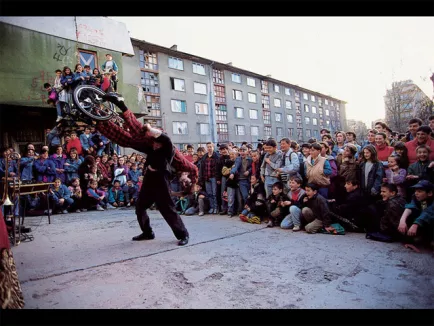
Mission and values of Clowns Without Borders
Clowns Without Borders France defines itself as an artistic association of international solidarity whose mission is to provide psychosocial support to populations affected by humanitarian crises or living in great precariousness, primarily children. Concretely, its artists intervene through clown, circus, magic, music or dance performances to give back "the taste for smiling" to children who have suffered conflicts, forced displacements or disasters. The aim is to offer a moment of respite and joy to the most vulnerable, in order to help them rebuild their emotional lives. All the association's contributors are performing arts professionals who volunteer their art to serve this cause, during the missions. Clowns Without Borders France always works in close partnership with local associations or NGOs already present on the ground, to integrate its artistic action into a coherent humanitarian framework.
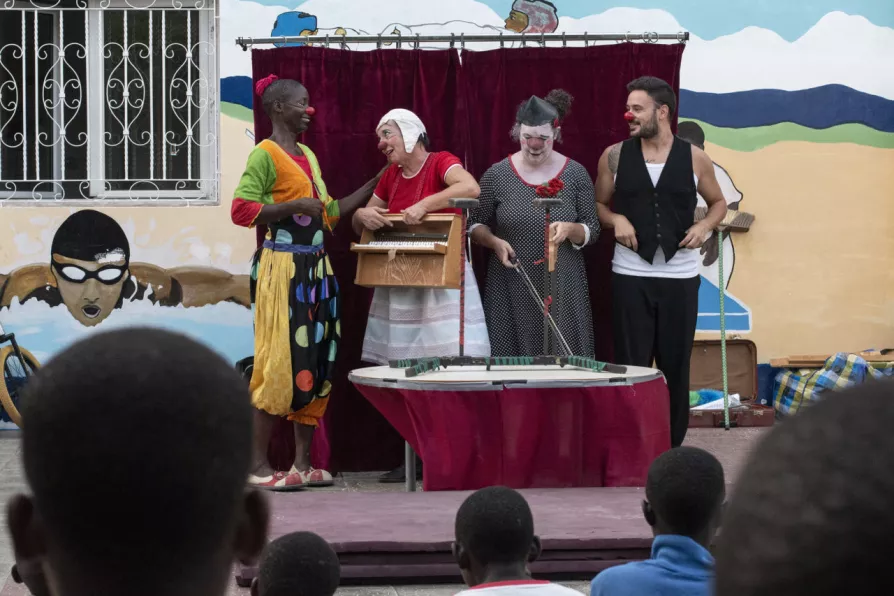
The values of Clowns Without Borders France are expressed in a clear advocacy and ethic. The association is particularly committed to respecting the right to childhood and considers access to art and culture a fundamental right. Its actions are guided by strong principles that direct its methods of intervention and its public discourse:
- The right to childhood for all, at any age – In many crises, children's rights (education, play, carefree living) are violated on a daily basis. Clowns Without Borders France affirms the urgency of defending the right to laugh, play, and imagine , to give every child back a part of childhood even in the midst of hardship.
- The voluntary commitment of professional artists – "Putting one's art at the service of the most vulnerable" is a credo of the association. Convinced that access to art and culture contributes to emancipation and human dignity, Clowns Without Borders only employs trained and volunteer artists on assignment, a guarantee of authenticity and generosity in action.
- Prioritizing forgotten crises – True to its name, Clowns Without Borders aims to break through barriers, including those of media indifference. The organization prioritizes interventions in under-reported contexts, using its unique approach to draw the attention of the general public, the media, and other organizations to "forgotten crises."
- Respect for humanitarian principles – Although atypical, the work of Clowns Without Borders France aligns with the founding principles of humanitarian aid: humanity (priority to the needs of the most vulnerable), impartiality (aid without discrimination), neutrality, and independence from political or religious interests. These ethical guarantees ensure that shared laughter never serves as propaganda, but rather a universal humanitarian cause.
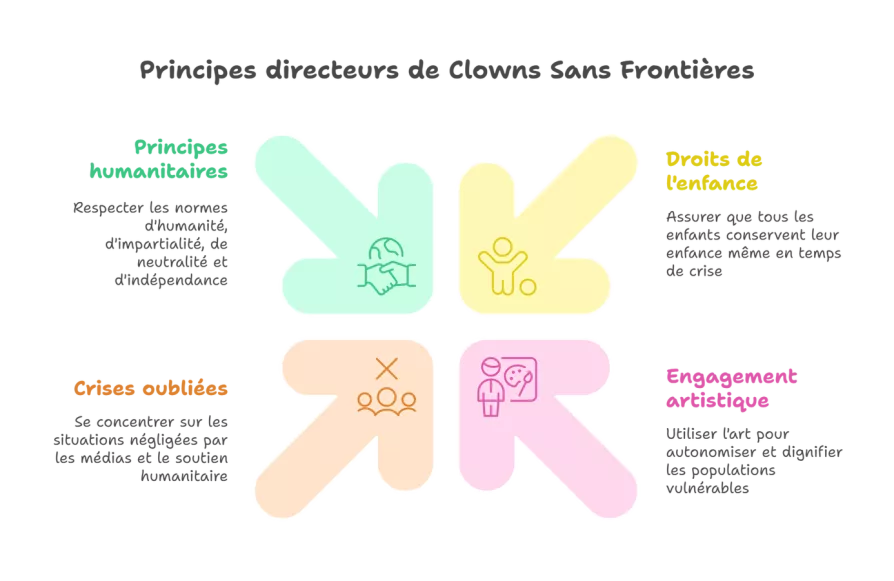
In short, the vision of Clowns Without Borders France revolves around a central message: "Laughter, play, and imagination are not luxuries, but essential needs," even in emergency situations. The organization's advocacy promotes the right to childhood throughout the world, believing that access to art and culture is a human right.
Clowns Without Borders France thus claims the place of cultural rights on the same level as primary needs: "we claim that cultural rights are part of the basic rights and needs of the person," we can read in its manifesto. Its approach is resolutely civic and militant, emanating from members of civil society (the artists themselves) who engage alongside vulnerable populations to defend their dignity. This commitment is reflected in a particular method of action, based on listening to the field, collaboration with humanitarian and artistic partners, and the concern to perpetuate the effects of each mission beyond the show.
Artistic interventions on the ground
Internationally: Camps, Crisis Zones and Forgotten Communities
Since 1993, Clowns Without Borders France has deployed its activities all over the world , in response to various crises. More than 40 countries and territories have welcomed the association's red noses, from Africa to Asia, including the Middle East and Eastern Europe. Historically born in the refugee camps of the Balkans, the NGO has subsequently carried out missions in contexts as diverse as: isolated villages in Senegal , disadvantaged neighborhoods in Madagascar , displaced persons camps in Ethiopia , disaster areas after the tsunami in Southeast Asia , the Palestinian territories in the West Bank , and even orphanages in Romania , to name but a few. Each time, the aim is to intervene as closely as possible to populations who are victims of armed conflicts, natural disasters or extreme poverty , in order to provide them with moral support through laughter.
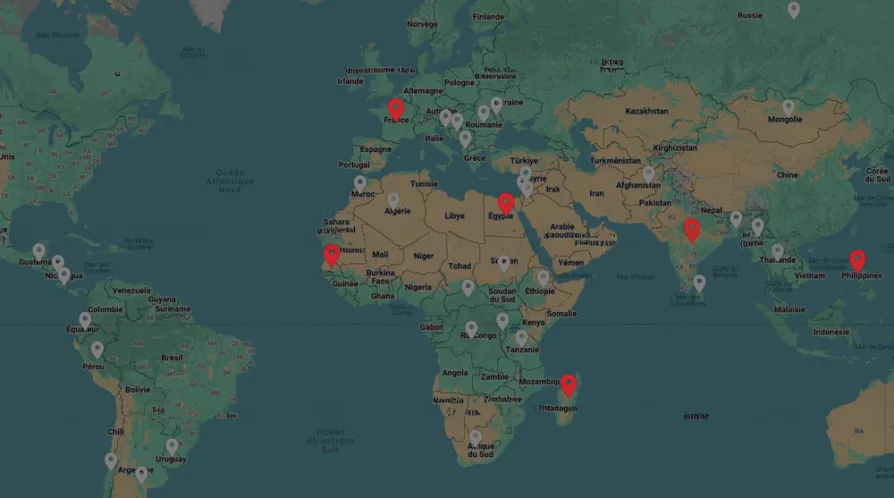
Clowns Without Borders France generally operates after the immediate emergency phase , complementing traditional humanitarian aid. As its general delegate, Noémie Vandecasteele, points out, the association intervenes "on the second line," when vital needs (food, medical care, shelter) have been met, and people can actually enjoy a show.
The challenge then is to create a space of shared joy in often traumatic environments. The forms taken by the missions vary: street performances in refugee camps, village tours in war zones, artistic workshops in centers for demobilized child soldiers, etc. For example, in 2005 in Afghanistan , the teams organized clown shows and workshops in Kabul for children who had grown up amidst violence and exile.
In 2013, a tour was conducted in the Philippines with street children in Manila, bringing music and clowning to neighborhoods where children's laughter is rare. More recently, in the fall of 2023, Clowns Without Borders France has scheduled interventions in Turkey (with refugee and disaster-stricken families) as well as in Senegal , while an innovative mission was planned in a prison for minors and women in Cambodia – proof of the diversity of the contexts involved.
Clowns Without Borders' areas of action cover several stages of humanitarian intervention:
- In emergency situations , the association offers immediate shows in camps and disaster areas, in order to support the process of psychosocial resilience alongside material relief. These shows act as an initial emotional balm , allowing children and their families to breathe and rebuild themselves internally after the shock of a war or disaster.
- In the rehabilitation and recovery phase , clowns work with refugee or displaced populations over the medium term. Tours are organized in camps or host communities to support the return to a normal and sustainable social life. Laughter becomes a tool to support the reconstruction of uprooted people and strengthen their ability to move forward.
- In a development context , Clowns Without Borders sets up artistic activities for children who are excluded or deprived of their liberty (street children, minors in prison, young people from marginalized minorities). These projects are always carried out in partnership with local artists. The objective is twofold: to integrate the right to childhood (leisure, expression, creativity) into local education and development programs, and to encourage local artistic talents to continue this work once the mission is completed. For example, in Madagascar , where Clowns Without Borders has been working for a long time, the teams set up workshops with Malagasy musicians and actors so that they can in turn perpetuate the activities with disadvantaged children.
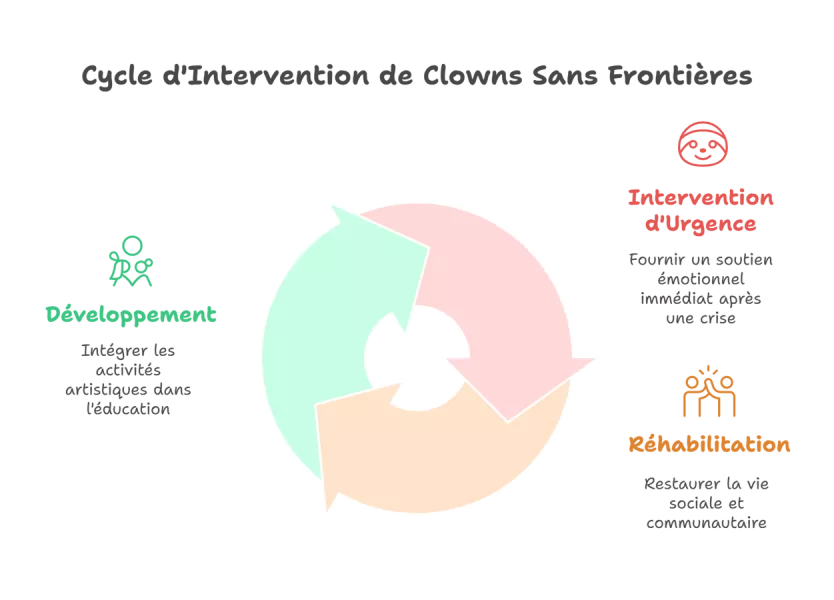
Whatever the precise form of the intervention, a Clowns Without Borders France show is intended to be participatory and adapted to the context . The acts are often designed on site, nourished by exchanges with the community and local culture. The association's artists seek to involve the public - especially children - in the clowning game, through laughter, songs, and spontaneous interactions, so that everyone becomes an actor in a moment of sharing. It is not uncommon for local artists to join the ephemeral troupe created for the duration of a mission, giving rise to unique collective creations. This intercultural co-construction strengthens the impact of the shows: it ensures a better reception by the public (who recognize themselves in the cultural references used) and leaves behind seeds, by training local partners in the techniques of humanitarian clowning.
In France: serving the most vulnerable and raising awareness
While most of Clowns Sans Frontières France's missions take place abroad, the association also operates in France , with a focus on local solidarity and development education. From its earliest years, Clowns Sans Frontières France has worked in France with populations in difficulty, for example with children from homeless families in the Paris region. Today, the association carries out artistic projects with marginalized communities on French soil, often in partnership with social structures.
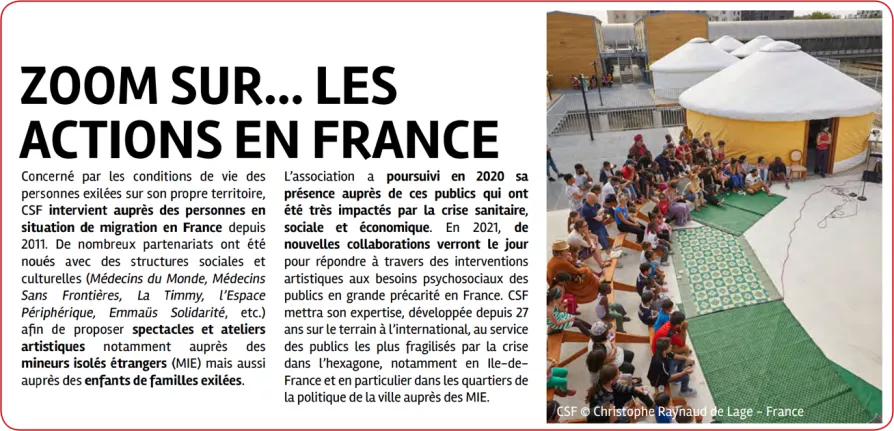
An important focus is work with migrants and refugees in France . For example, shows and workshops are regularly organized in emergency accommodation centers for migrant families (CHUM) in Île-de-France. In these places where families who have fled war or poverty are trying to rebuild their lives, clowns offer children a time for play and laughter that helps them overcome the trauma of exile. In 2023, a cycle of clown workshops took place at the CHUM in Ivry-sur-Seine (Val-de-Marne): for several days, refugee children were able to learn circus arts and put on a short show on the theme of vacations, which they proudly presented to their parents and classmates. The cheerful faces and bursts of laughter echoing through these usually austere centers illustrate the impact of these interventions.
Clowns Without Borders France also collaborates with associations working with residents of shantytowns and squats in France . In Seine-Saint-Denis, for example, the association conducted clown workshops with young people supported by the NGO Les Enfants du Canal , as part of a program to integrate young adults from shantytowns. These workshops allowed young volunteers, often from migrant Roma communities, to become actors in an artistic project: trained in clown work by the CSF team, they put together a show presented to younger children from these precarious neighborhoods. Such an approach not only promotes access to culture for excluded populations, but also promotes the recognition of these young people as leaders and citizens in their own right.
Finally, Clowns Without Borders France is committed to raising awareness among the French public about children's rights and international solidarity. The association organizes events, photo exhibitions, screenings, and testimonials to raise awareness of its work and, through it, the plight of children in forgotten crises. For example, campaigns such as the "March of Noses" —a street event bringing together artists and citizens—have been conducted to draw attention to the cause of the right to a childhood around the world, involving dozens of cultural partners in France. These communication actions, often playful and participatory, extend the fieldwork by inviting the general public to reflect on the power of laughter and art in the face of human distress.
A humanitarian and cultural impact
After 30 years of existence, Clowns Without Borders France can measure a multifaceted impact , at once humanitarian, psychosocial and cultural, of its interventions. On a strictly humanitarian level, the association contributes above all to the psychological well-being of populations affected by crises. Numerous testimonies collected after the shows confirm that these moments of shared laughter provide children and their parents with “moments of positive emotions and well-being” , in the words of Noémie Vandecasteele. Children who had lost their smile rediscover, if only for an hour, the carefree spirit of play. “Laughter and artistic practice allow children to reconnect with positive emotions, to gain perspective on their difficult situation and to escape from their daily lives” , explains the general delegate of CSF. These moments stolen from the gravity of reality have a "restorative" effect: they help heal invisible traumas, restore vital energy and hope. Humanitarian psychologists now consider this psychosocial support an essential complement to material relief, particularly to foster the resilience of young people in the face of the shocks they have suffered.
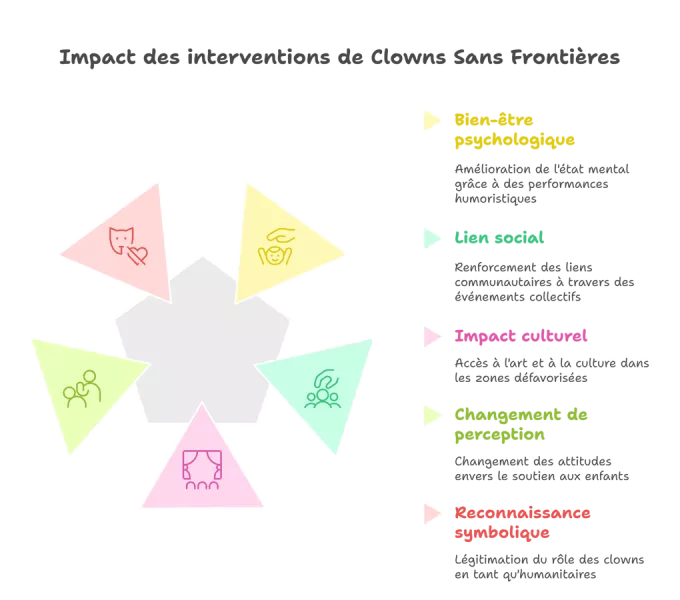
The impact is also evident in the social and community ties . A clown show in a refugee camp or a disaster-stricken village is not just individual entertainment: it is a collective event that brings together people of all ages and backgrounds around a common experience. "In refugee camps, for example, where communication between individuals can be difficult, shows offer a way to create cohesion among all the beneficiaries," observes Noémie Vandecasteele. Laughter, a universal language, abolishes linguistic, cultural or social barriers during a performance. We then see communities, sometimes divided, come together to share a moment of humanity. This strengthening of social ties is valuable in contexts where cohesion is undermined by adversity. Moreover, by reinvesting public spaces (the village square, the camp courtyard) to turn them into performance venues , clowns breathe new life into these spaces and recreate a sense of community where fear or withdrawal once reigned. It is not uncommon for local communities to continue using these gathering places for other solidarity or festive activities after Clowns Without Borders France has left – a sign that the momentum it has created continues.
On the cultural level, the work of Clowns Without Borders carries a strong message: access to art is a universal right and a factor of emancipation . By bringing shows to places where cultural expression is non-existent or reduced (camps, slums, conflict zones), the association affirms that culture is not a luxury for well-fed Westerners, but a fundamental need, including in survival situations. In doing so, it gives a voice to children and populations often reduced to the status of silent victims. Live performance, interactive by nature, allows beneficiaries to express laughter, emotions, and even to go on stage alongside the clowns. For many children, it is the first opportunity to participate in an artistic activity, to feel valued in a way other than through food or school aid. Clowns Without Borders' missions thus leave a lasting cultural imprint : they awaken children's imaginations, sometimes reveal local artistic vocations, and raise awareness among local educational stakeholders of the importance of play and creativity in child development.
The testimony of Isabelle Marie, a partner of the association in Madagascar for 20 years, illustrates this global impact. She describes how the laughter brought by clowns "helps transform children's daily problems thanks to the positive messages it delivers." Above all, she notes, "CSF's work is not only aimed at children; it also encourages those in charge of reception centers and schools to improve their approaches to children and their parents, for lasting social change." In other words, the presence of clowns triggers an awareness among local adults—educators, social workers, parents—of the importance of treating children kindly and attentively. This "change of perspective" on childhood is one of the most profound benefits of the missions. Furthermore, Isabelle highlights the "richness of the exchanges" between CSF artists and the Malagasy musicians who accompany them: a mutual enrichment that, again, goes beyond the sole framework of the show.
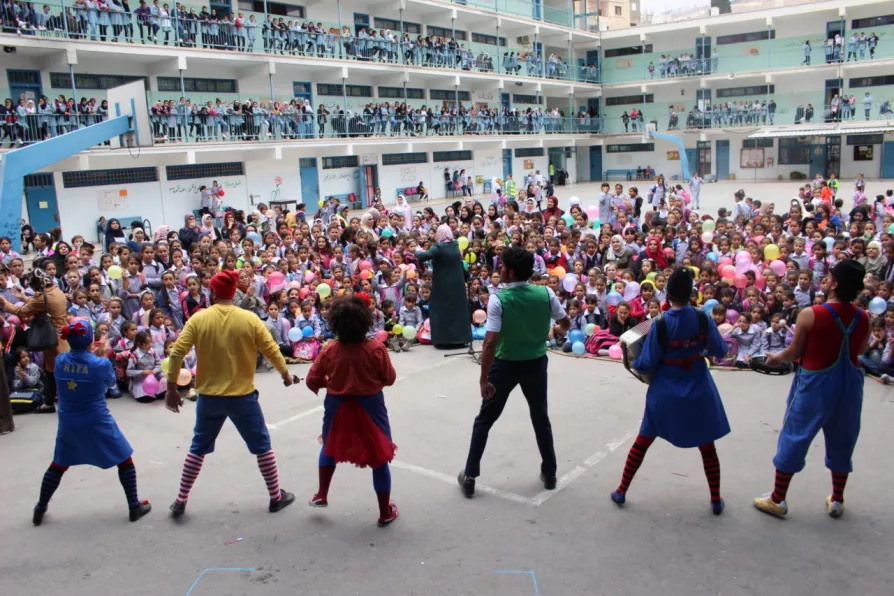
In quantitative terms, the impact of Clowns Without Borders France is not negligible. For example, in 2016 alone, the association was able to carry out 12 missions around the world (117 days of action) with more than 10,000 children and adult beneficiaries , thanks to the mobilization of 111 volunteer artists who went on missions (Madagascar, Egypt, Uruguay, India, Armenia, etc.). These figures give an idea of the scale of the public reached . In three decades, hundreds of thousands of children have been able to laugh and escape for a few moments thanks to humanitarian clowns, in more than 30 different countries. Beyond the direct beneficiaries, the media coverage of certain interventions has helped to raise awareness . For example, actions carried out in forgotten crises (such as the Sahrawi refugee camps, or landlocked areas in Burma) have generated articles and reports, shining a spotlight on situations little known to the general public. We can therefore speak of an advocacy impact: Clowns Without Borders succeeds, through the originality of its approach, in drawing attention to neglected humanitarian causes, thus helping to mobilize other actors or financial support in their favor.
Finally, on a symbolic and cultural level, Clowns Without Borders has made a notable contribution: that of having legitimized the role of the clown as a "humanitarian figure" . Long perceived solely as a circus performer, the clown here finds a new dimension, that of "comforter" to use the words of the famous Howard Buten. The association has demonstrated that one can be a clown and a humanitarian, without one distorting the other - quite the contrary. This message has infused the cultural and humanitarian world: art is increasingly recognized as a vector of resilience in crisis, and Clowns Without Borders has been a pioneer in this area. In 2014, the association received the "Culture for Peace" Prize from the Chirac Foundation, recognizing this alliance of art and solidarity. Other distinctions, such as the Cultural Diversity Prize (2019) or the Pro Bono Trophy (2020), have recognized its work. But perhaps the best indicator of impact remains the smile of a child who, in the middle of a refugee camp or a makeshift hospital ward, marvels at a red nose and allows himself to laugh again.
Structure, governance and operation of the association
To accomplish this unique mission, Clowns Without Borders France relies on a lean but solid organizational structure. Registered as an association under the French law of 1901 in 1993, it operates according to a classic model of association governance: an annual General Meeting of its members, which elects a Board of Directors (BoD) responsible for defining directions and overseeing management. The BoD, headed by a president, meets regularly to set budgets, approve accounts, and monitor ongoing activities. It delegates day-to-day management to a salaried team based in Paris, recruited by it to implement the association's project on a daily basis.
The permanent team of Clowns Without Borders France is deliberately small. Currently, it consists of three employees : a General Delegate (who ensures overall management and coordination), a Project Manager (managing field missions and partnerships), and a Communications and Donor Relations Officer. This small operational team, based in the 19th arrondissement of Paris, manages all activities from the headquarters. It manages the logistics of missions abroad (coordination with local partners, recruitment of volunteer artists for each project, material preparation), the development of projects in France, communication (website, social networks, press relations), and fundraising. Given the volume of work, the team is regularly reinforced by civic service volunteers and interns , who provide support on specific tasks (facilitating workshops in France, administrative assistance, content editing, etc.).
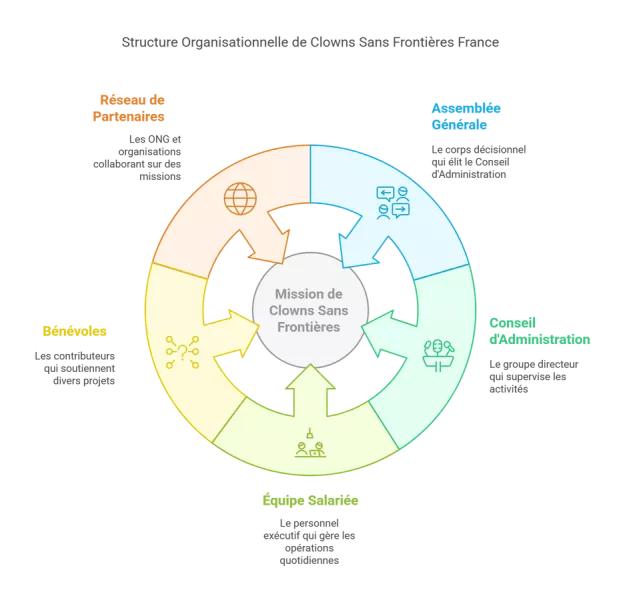
Above all, Clowns Without Borders France could do nothing without its vast network of volunteers . Each year, more than 300 volunteers contribute to the association's actions in various ways. These include, first and foremost, the volunteer artists who go into the field: clowns, actors, musicians, acrobats, magicians, etc., all performing arts professionals, who devote several weeks of their time to participate in a mission without remuneration (only their expenses are covered). In 2016, for example, 111 volunteer artists went on a humanitarian tour with Clowns Without Borders. This voluntary artistic mobilization has been the DNA of the association since its beginnings, and one of its great strengths. Volunteers also include people who get involved in France to support the head office team or carry out awareness-raising actions: organizing events, disseminating information, logistical assistance during campaigns, technical skills (video editing, IT, translation, etc.). This skilled volunteering allows the association to remain on a "human scale" , that is to say to prioritize the quality and impact of its projects rather than the growth of its structure. Volunteering and shared passion are at the heart of its atypical identity.
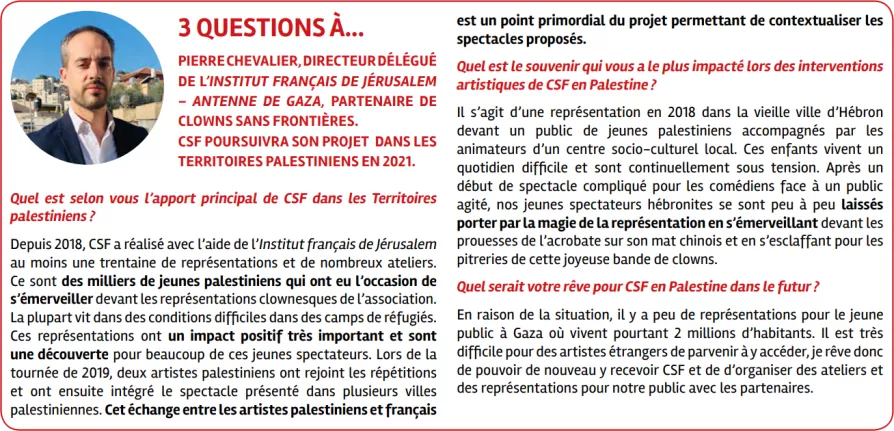
The logistical functioning of missions relies heavily on cooperation with locally established NGOs. Clowns Without Borders France intervenes at the request of local or international partners already present on the ground, or when the association identifies an urgent unmet need. In practice, this means that missions are often organized in response to an invitation: for example, a medical humanitarian NGO or a children's aid association asks Clowns Without Borders to complement its work with performances, or a local collective offers to host a clown tour. This approach ensures the relevance of the intervention and its harmonious integration into the context. Before each mission, a rigorous preparation phase is carried out: discussions with the requesting partner, definition of objectives (which audience, which locations, what timing), formation of a suitable artistic team (useful linguistic or cultural skills, balance of artistic disciplines), and logistics (light performance equipment, transport, visas, etc.). Once on site, the artists are generally accompanied by a CSF coordinator and the local partner's team, who facilitate contacts with the population and authorities and ensure security conditions. It is a painstaking work that lies behind the spontaneous magic of the show: as one of the managers puts it, "our approach is based on questioning and listening to the field, meeting with partners [...] We rely on their expertise to design our interventions to complement their action." This operational complementarity is one of the keys to the success of the missions.
Internally, Clowns Without Borders France cultivates a collaborative and participatory spirit. The small size of the salaried team encourages great responsiveness and close relationships with volunteers and artists. Former volunteers often remain linked to the association, forming a sort of large family united by the experience of the missions. The Annual General Meeting is an opportunity to bring together members, volunteers and partners to take stock, discuss orientations and elect the Board of Directors. As an illustration, in 2020 the association conducted a strategic reflection to adapt its modes of action to the context of the Covid-19 pandemic, in consultation with its members. This adaptability and flexible management allowed it to get through difficult periods (conflicts preventing certain missions, health crises, etc.) while maintaining the focus on its purpose.
Partners and supporters of the association
To carry out its projects around the world, Clowns Without Borders France relies on a wide network of partnerships , reflecting the cross-disciplinary nature of its action between culture and humanitarianism. These partners are divided into several complementary categories:
- NGOs and humanitarian associations (operational partners) : In the field, Clowns Without Borders very often collaborates with other NGOs that host it or integrate its shows into their programs. For example, during its missions in the Democratic Republic of Congo, the association was able to count on the logistical support of Doctors of the World and the local Red Cross. Similarly, in Guatemala, organizations such as Enfants Réfugiés du Monde , ATD Quart Monde or Doctors Without Borders (Switzerland) facilitated the arrival of clowns in isolated communities. These partner NGOs see clowns as a way to bring psychological well-being to their beneficiaries and to strengthen the overall effectiveness of aid. The links are sometimes long-standing: for example, in Madagascar, Clowns Without Borders has been working for more than 15 years in partnership with the NGO Handicap International and the Malagasy association Afafi to organize its tours in remote regions. The association also supports programs managed by UNICEF, the United Nations High Commissioner for Refugees (UNHCR), or Save the Children, depending on the context. This synergy with the traditional humanitarian sector is a pillar of its modus operandi.
- Public institutions and international agencies : Clowns Without Borders France benefits from the support of several institutions, particularly for the financing of its projects. The French Ministry of Culture supports the association in its mission to promote cultural rights. The French Development Agency (AFD) , the state development bank, has also contributed to certain missions or impact studies. French embassies abroad (Madagascar, Senegal, Egypt, etc.) regularly provide financial or logistical support for clown tours in these countries. At the local level, the City of Paris has distinguished the association through the Solidev Label for supporting solidarity initiatives, and regional or departmental councils may occasionally subsidize actions in France. On the international scene, Clowns Without Borders International (the global network of which CSF France is a part) is recognized as an official partner of UNESCO for the promotion of cultural diversity and the right to a childhood (consultative status obtained in 2015). This institutional recognition reinforces the association's credibility in the humanitarian community.
- Foundations, patrons, and corporate donors : A significant portion of resources comes from private generosity, through foundations and corporate sponsors. Loyal supporters include the Air France Foundation , which has been working with CSF for many years to fund missions in Africa. The Pierre Bellon Foundation (of the founder of Sodexo) is also a major financial partner. Other corporate or family foundations contribute depending on the project: the Fondation de France, the Hoppenot Endowment Fund, the Wavestone Foundation, the Banque Populaire Rives de Paris Foundation, etc. Some public agencies or programs may play a patronage role, for example the Agence du Service Civique or Franco-German cultural funds. At the same time, the association develops corporate sponsorship through partnerships with SMEs or large companies that are sensitive to its cause. The solidarity tour operator Touristra Vacances , for example, is one of the operational partners, offering logistical support. Companies like Processus Chenel (specializing in scenography) support CSF by providing stage equipment. In addition, Clowns Without Borders offers companies various partnership opportunities (solidarity rounding, clown team building, etc.) to involve the corporate world in its humanitarian adventure.
- Artists, personalities and cultural structures : Many renowned artists have chosen to sponsor or support Clowns Without Borders France, aware of the scope of its action. The musician Matthieu Chedid (alias -M-), patron of the association, sums up his support in one sentence: "Laughter is life... I am proud that there are associations like Clowns Without Borders." Alongside him, comedian Pascal Légitimus , singer Arthur H , magician Yann Frisch , journalist Fabrice Drouelle and drummer Anne Paceo are among the sponsors who give their voice to promote the actions of solidarity clowns. These personalities not only provide moral support, but often participate in fundraising or communication events, broadening the association's audience. Clowns Without Borders also forges close ties with the world of circus and entertainment in France. Several cultural venues and companies support its projects: the Cirque Électrique (an alternative venue in Paris), the Cirque Jules Verne d'Amiens (National Circus Center), the Le Samovar clown school in the Paris suburbs, the Le 104 arts center in Paris, and the Scène nationale de l'Essonne, have contributed to creative residencies or awareness-raising activities led by CSF. In the North of France, troupes such as the Compagnie Vis Comica and street festivals have hosted performances serving CSF's cause. This cultural support strengthens the association's visibility in the artistic community and helps it recruit new volunteers.
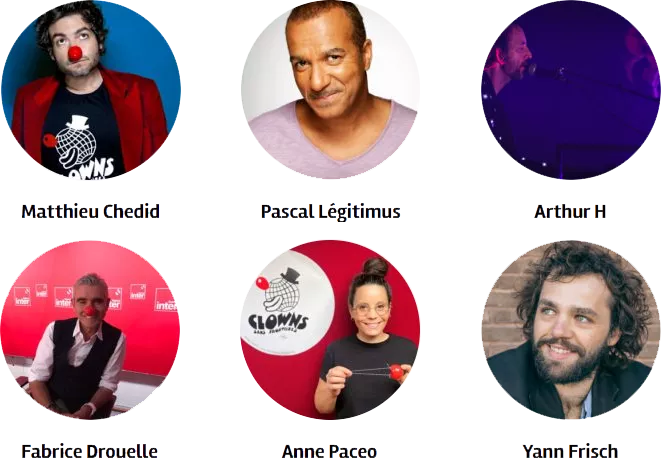
By bringing together these partners from diverse backgrounds – humanitarian, institutional, private, cultural – Clowns Without Borders France manages to build comprehensive projects, where everyone plays their part. For example, a typical mission could be funded by a corporate foundation, organized in conjunction with Médecins du Monde on site, with the participation of local artists identified through the French Institute, and be the subject of a report broadcast on the networks of a famous sponsor. This partnership network is coordinated by the association with professionalism, which has earned it integration into several official networks : it is a member of Coordination SUD (the national coordination of French solidarity NGOs), as well as the Groupe Enfance , which brings together NGOs working for children's rights. It also belongs to the Clowns Without Borders International network, mentioned below, which pools the experiences of the various national branches.
An international network of humanitarian clowns
Although autonomous in its management, Clowns Without Borders France has been part of an international dynamic from the outset, forming part of a constellation of sister associations around the world. It all began with the founding initiative of Tortell Poltrona in Spain in 1993, which inspired not only France but also other countries to create their own Clowns Without Borders branch. Clowns Without Borders International (CWBI) is today the informal federation that brings together these various national branches. Based in Barcelona, where it all began, CWBI promotes coordination, the exchange of best practices, and the global visibility of the movement.
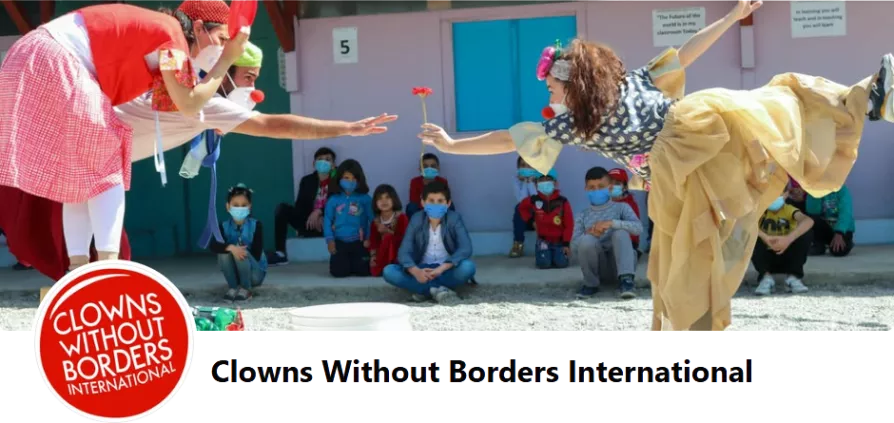
There are currently around fifteen Clowns Without Borders chapters active around the world. In addition to France and Spain, Clowns Without Borders associations exist in Canada (founded in 1993-94, it was one of the first after Spain), Sweden (Clowner Utan Gränser, created in 1996), the United States (Clowns Without Borders USA, launched in 1995 during a mission to Mexican Chiapas), but also in Belgium , Germany , South Africa , Australia , Ireland , Brazil , etc. Each of these entities is legally independent, but all share the same humanitarian mission and the same philosophy of voluntary commitment through art. The CWBI network facilitates regular meetings between these branches (international assemblies, joint training) and carries out joint advocacy on the international scene in favor of cultural rights and the right to a childhood. Since 2015, Clowns Without Borders International has held consultative status with UNESCO, allowing it to participate in global conferences on arts education and peace. This recognition reinforces the idea that the model initiated by Tortell Poltrona has taken on a global dimension.
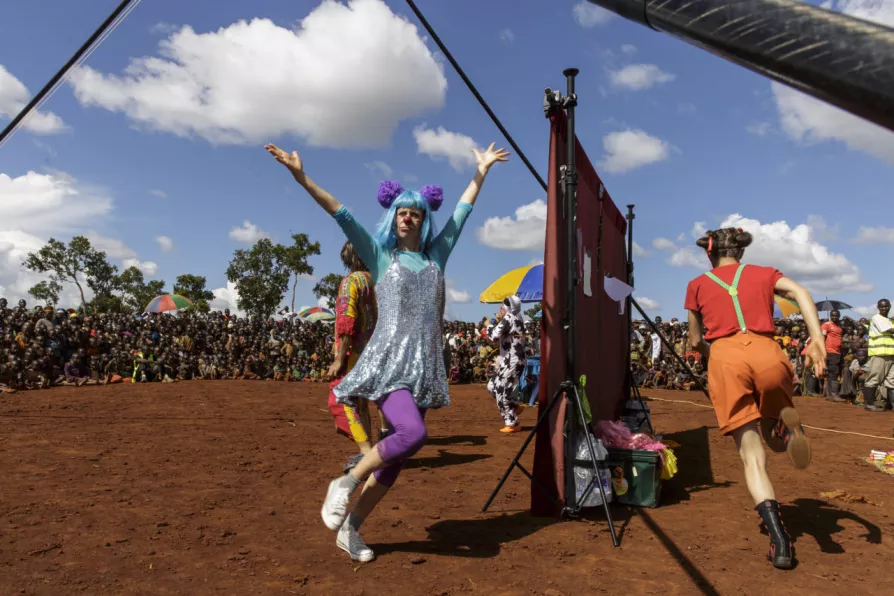
Collaborations between the various branches are frequent. Historically, as we have seen, the first CSF France mission in 1993 was a Franco-Spanish initiative in Croatia, just as in 1994 a Canadian-French mission went to the former Yugoslavia. Even today, mixed teams are sometimes formed for specific projects: for example, a clown from CSF Sweden will join a tour led by CSF Belgium in Greece, or CSF France will co-organize a project with CSF Canada in Lebanon. Information sharing is constant via CWBI, which maintains a calendar of missions from each country to avoid duplication and promote synergies. In the event of a major crisis, such as the 2010 earthquake in Haiti, the branches can combine their efforts: for example, after the earthquake, Clowns Without Borders conducted several tours in Haiti in 2010-2011 with the participation of artists from various countries, in partnership with NGOs such as Terre des Hommes.
Each branch brings its own sensibility, enriching the whole. The Swedes, for example, have developed methods inspired by clown psychology to work with child soldiers in Uganda; the Canadians have focused on training local clowns in the countries they visit; the Americans have documented certain interventions (such as in Chiapas in 1996) showing how the presence of clowns can even help ease tensions (it is said that a performance given to Zapatista sympathizers helped defuse a tense situation during peace negotiations). These feedbacks nourish collective reflection.
Clowns Without Borders France maintains close ties with its Spanish and Canadian counterparts, given their shared history, but also with Clowns Without Borders Sweden, one of the most active branches in Europe. In 2022, for example, CSF France participated alongside CSF Sweden and Spain in a project supported by the European Union to promote children's rights through social circus. This type of international partnership demonstrates the cohesion of the CWBI network and the desire to place the art of humanitarian clowning within broader international cooperation frameworks. Internally, CWBI also allows for the sharing of tools (safety guides, ethical charters, impact assessments) and the adoption of common positions. The ethics and charter of Clowns Without Borders France, for example, closely align with those defined at the international level to ensure responsible practice of humanitarian clowning.
Thus, while Clowns Without Borders France operates primarily with its own resources, it is never isolated. It belongs to the global family of Clowns Without Borders , united by the same red nose, a symbol of hope. This international network multiplies the reach of the slogan "children without smiles, never again," making it resonate on every continent. It also gives the French association a platform to put forward its ideas to major authorities and to learn from others. Ultimately, this diplomacy of laughter builds bridges between peoples: Clowns Without Borders form a kind of universal ambassadors for the right to childhood.
Testimonies and significant stories
Behind the numbers and principles lie human stories that embody the work of Clowns Without Borders. A few emblematic stories help capture the essence and emotion of these unique missions.
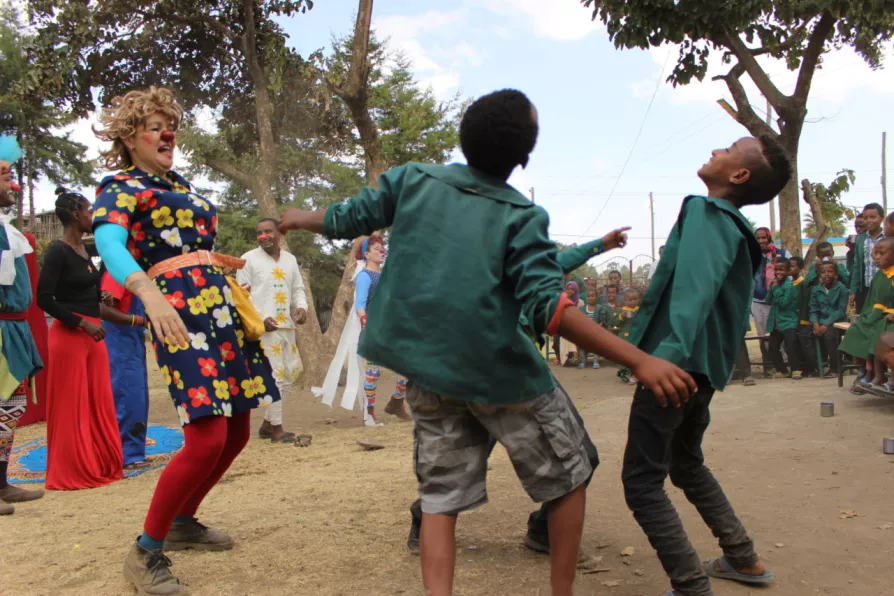
The founding anecdote is itself a beautiful testimony to children's solidarity: in 1993, schoolchildren in Barcelona, learning that their correspondents from a Croatian school were living in a refugee camp and "no longer had any reason to laugh" , organized a fundraiser to send their favorite clown, Tortell Poltrona, to perform there. It was therefore Spanish children who first had the idea of using a clown to console other children traumatized by war. Tortell, touched by this request, attracted more than 4,000 children to his show in the Croatian camp, triggering unforgettable bursts of laughter among the tents. The impact was such that the humanitarian workers present realized how much "we needed clowns and laughter for populations in crisis" . This moment crystallized the need for an organization like Clowns Without Borders. Tortell Poltrona likes to recall that, on site, a child simply said to him after the show: "It's been so long since we laughed, thank you." These few words alone justified the entire nascent enterprise.
Over the course of their missions, clowns accumulate memories that are often overwhelming. In Macedonia, during the Kosovo crisis in 1999, a clown from the French team recalls a performance in an Albanian refugee camp: "At first, the children remained at a distance, their eyes blank. Then one of them cracked a smile when they saw us acting silly, and all the others gradually came closer. At the end, they all wanted to touch our red nose, as if to check if it was real... and they laughed out loud." The transformative power of laughter on a group of prostrate children remains etched in her memory, as does the metamorphosis of the atmosphere in the camp that day—the parents themselves laughed when they saw their children playing again.
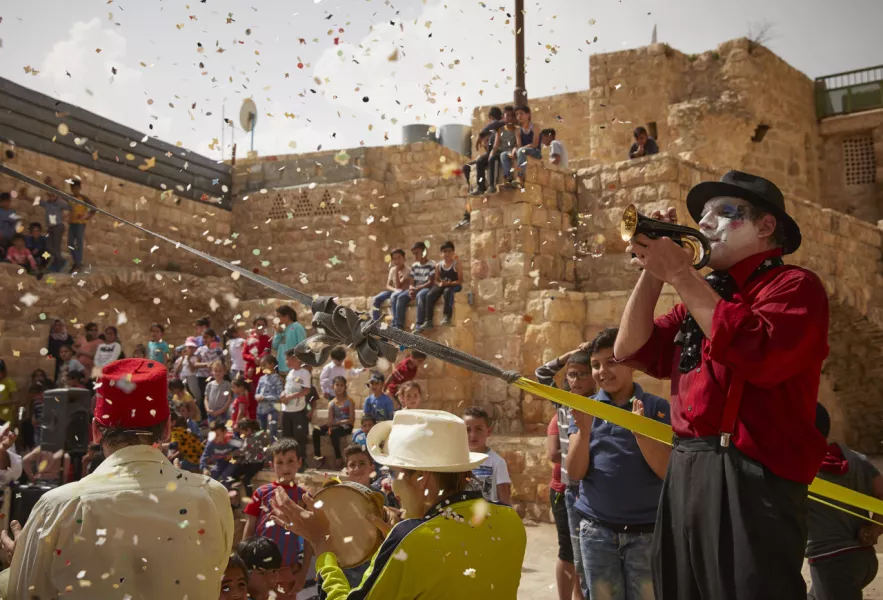
Another scene, another continent: in 2017, in a remote village in Madagascar , the Clowns Without Borders team put on an open-air show with the help of the local music group Telofangady . Isabelle, CSF's Malagasy partner, says that at the end of the performance, the villagers improvised a collective dance around the clowns: "The CSF artists and our local musicians danced hand in hand with the children and parents. We no longer knew who was a clown and who was a spectator. That day, the village rediscovered its former joy, and for a few hours we forgot the drought, the poverty..." She points out that since this visit, local teachers have integrated more games and songs into their school, convinced by the experience of the playful interest for children.
In France , there are also some striking stories. For example, during a workshop held in the suburbs of Paris, young volunteers from slums spoke of the impact it had on them: “At the beginning of the workshop, I barely dared to speak. And then I just played the clown in front of 50 laughing kids… I don’t recognize myself!” one of them confided with a smile, proud to have overcome his shyness thanks to the project with Clowns Without Borders. Another added: “When I was little in Romania, I never saw a show. So making French children laugh today, for me, is revenge.” These words show that the art of clowning can also positively transform those who practice it, in addition to those who watch it – a valuable multiplier effect.
Among the clown figures who have marked the history of the association, we can cite Malik Nahassia , one of the co-founders, who went on numerous missions in the 1990s and 2000s. He particularly remembered a tour in the former Yugoslavia where the team had to be escorted by UN peacekeepers to reach an isolated orphanage in Bosnia. "We played under the protection of armed soldiers, it was surreal... And these children, who had lost everything, laughed at seeing my oversized shoes and my gaffes. At that moment, I understood that our place was really here, close to those who are suffering." This feeling of legitimacy of the artist at the heart of the crisis , many clowns expressed it afterward: far from feeling futile in the face of horror, they had the feeling of providing unique help, complementary to that of doctors or humanitarians.
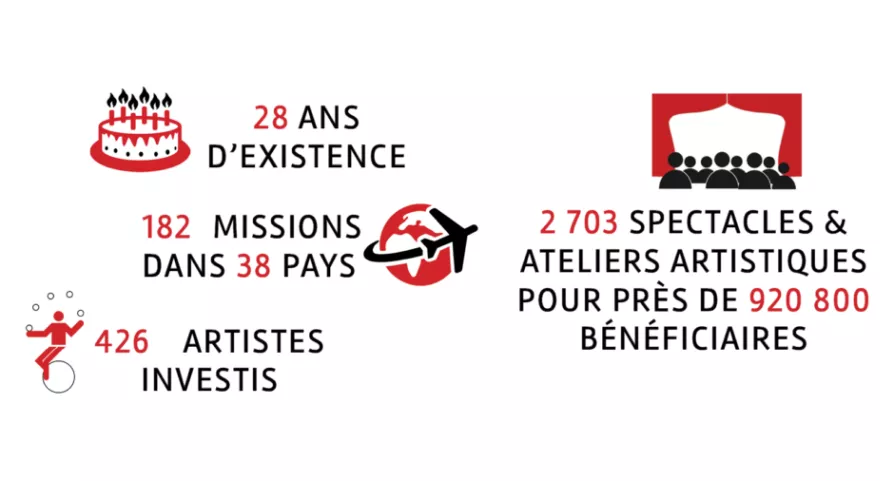
There are countless anecdotes: here, a red nose given as a gift to a child who never takes it off, there, a clown who makes a group of exhausted mothers laugh in a makeshift camp, or this improvised show in the rain in Bangladesh where the artists end up soaked but happy to see the audience dancing in the downpour with them. These stories, often reported in the association's mission journals , nourish the legend and the spirit of Clowns Without Borders. They remind us that, behind every action, there are unforgettable encounters : those of human beings who, beyond the barriers of language and misfortune, connect through laughter and shared emotion.
In conclusion, Clowns Without Borders France embodies an original form of humanitarianism where the art of performance becomes a vector of care for the soul. Its history and its operation demonstrate the seriousness and rigor put at the service of a poetic idea: "to offer a bubble of laughter to children who are going through the storm" . For circus and performance professionals, it is a successful example of what their art can bring to society in the broadest sense, even to the hardest crisis zones. For the humanitarian sector, it is a reminder that assistance to populations is not limited to bread and roof, but also involves culture, play and hope . And for all of us, it is an invitation to believe in the universal power of laughter: a language without borders which, modestly but surely, helps to repair bonds and beings. As one of the association's sponsors, Yann Frisch, so aptly puts it, "clowns celebrate something beautiful, mysterious, sometimes healing: shared laughter." […] A possible way to heal the wounds of a bleeding world.”
Bibliography / Sitography
- Clowns Without Borders France – Official website : “Our Mission” and “Our Vision” pages (accessed in 2025). Information on the association's artistic mission, principles, and history.
- Coordination SUD – Clowns Without Borders France : NGO presentation sheet (consulted in 2025). Summary of the purpose, modes of action and advocacy of CSF France. (coordinationsud.org)
- Aurélie Billecard, LePetitJournal.com , August 6, 2023 – “Clowns Without Borders: breaking down borders through laughter and solidarity.” Journalistic article presenting the actions of CSF (France and international), with quotes from the general delegate and recent examples. (lepetitjournal.com)
- Viviane Poiret (CSF) interviewed on Le-Clown.fr, January 19, 2021 – “What is Clowns Without Borders?” . Presentation to the general public of CSF’s objectives (children victims of war, poverty, exclusion) and the first areas of intervention (refugee camps, shanty towns, juvenile prisons, etc.). (le-clown.fr)
- Arts Nomades Blog, Dec. 13, 2016 – “Clowns Without Borders – Make a Donation!” . 2016 financial report for CSF France (number of missions, beneficiaries, volunteer artists) and call for support, illustrating the financial functioning of the association. (arts-nomades.blogspot.com)
- Wikipedia (fr), article Clowns Without Borders (last updated 2025). History of the creation (Tortell Poltrona in 1993 in Barcelona, Antonin Maurel for the French branch), with references to specialized sources (BnF, Journal des Arts). (fr.wikipedia.org)
- Testimony of Isabelle Marie (CSF's Malagasy partner) – published on clowns-sans-frontieres-france.org, 2020. Account of her experience working alongside CSF in Madagascar, highlighting the impact on children and the benefits of intercultural exchange for local partners. (clowns-sans-frontieres-france.org)
- Clowns Without Borders France – "Our Partners" page of the official website (accessed in 2025). List of key supporters (foundations, institutions, cultural associations, grassroots NGOs) illustrating the association's diverse partner network. (clowns-sans-frontieres-france.org)
- Clowns Without Borders USA , “About Us” page (accessed 2025). Indication of CSF France’s membership in the international CWBI network, which includes 15 chapters worldwide. (clownswithoutborders.org)
- Clowns Without Borders France – Activity report and accounts 2019 (data extracted via Wikipedia).
Figures (annual budget, number of employees and volunteers) highlighting the human scale of the association. (fr.wikipedia.org)
Comments
!Be the First to comment!
Quartz diabolo kit + Accessories
Triple bearing diabolo, Superglass sticks, 10m Henrys string and bag!
